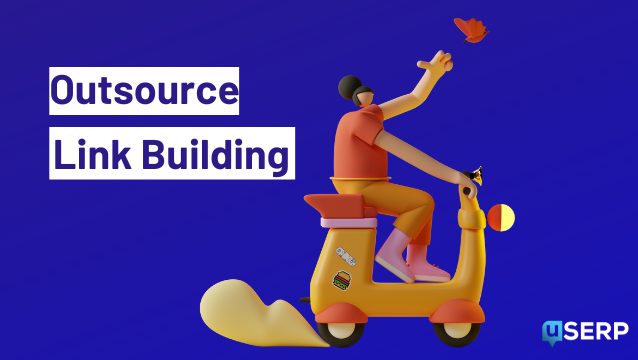The Years 2020 and 2021 have been defining years for online businesses.
Many retailers were forced to sell exclusively online, using web shops as the only sales channel. What is more, people became more reliant on other online social entertainment channels, too. Popularity of online services such as online gaming, video streaming, video chat and social media usage all saw an increase.
However, this also means a rise in competition, making it harder for online businesses, new and old, to gain new customers. Companies are increasingly turning to digital marketing to stand out from the crowd.
Rising competition, SEO marketing and FAQ pages
Both online and traditionally offline companies are now turning to digital marketing to increase traffic and gain more online visibility. This rise in demand is reflected in recent statistics by LinkedIn – digital marketing was said to be the highest growing occupation in 2021.
Paid online ads have experienced the highest growth and are usually the fastest way to bring in more customers, however SEO is still a big part of digital marketing strategy. SEO remains an integral part of an online marketing strategy to get to the top of the search rankings and stand out from the competition online.
Optimizing your FAQ page is a good place to start – a recent survey by Mckinsey & Company, points out that customer service is now more important than ever. The rise of open source ticketing systems and knowledge base management proves that businesses now need more ways to satisfy customers. Moreover, the Covid-19 crisis has triggered a sense of trust and loyalty. FAQ SEO may be one of the most overlooked aspects when it comes to optimizing your e-commerce store or website.
With a few steps that we will discuss in this article, you can make sure your FAQ page is fully optimized and becomes useful for both your customers and helps you rank high in organic search results.
Why set up an FAQ page?
Before getting into why it is important to optimize your FAQ page, let’s discuss what an FAQ page is useful for. As an example, here you can find some excellent FAQ templates and examples.
FAQ pages can be excellent for time and cost saving, and can improve the overall customer experience. If done correctly, they can speed up customer service as people can find answers themselves.
Several e-commerce platforms such as Shopify or Magento offer solutions to create your own FAQ page, here you can find how to choose an e-commerce platform for your store. If you are using Magento specifically, it is worth considering professional Magento development services since these can offer more streamlined solutions tailored to meet your needs precisely.
When developing an FAQ page for your e-commerce store or your web page and thinking about how to write FAQs, keep in mind that if fully optimized it can help you increase sales and organic traffic.
Let’s briefly highlight the benefits of an SEO-friendly FAQ page:
- saves time for your customer service teams
- saves time for your customers
- helps to save on operational costs
- creates a better customer experience
- you can establish yourself as an expert in the market
- improve sales and increase traffic
- great for SEO – use it to optimize your page
Why is an SEO-friendly FAQ page so important?
Search engines are built to display well set up FAQ pages, if they are optimized with most relevant keywords and the questions are well-structured.
With optimal user experience (UX) – simple answers, nice structure and engaging content, FAQ pages can be an essential tool to show up in organic search rankings. FAQ pages are an excellent way to show your audience that you care about finding a solution to their problems.
The content and answers provided on your FAQ pages can help with driving highly targeted traffic to your website.
So, let’s take a look at the most important steps to take to optimize your FAQ page.
5 steps to create an SEO-friendly FAQ page
To promote your product or service site through an FAQ page, it is essential to understand your users’ intent when they are searching for answers.
For example, if you are in e-commerce business or planning to start out, your customers are likely to search about the product returns process or payments. Or if you are a website providing SaaS services, your customers will most likely want to know more about the advantages of your SaaS solution and services.
To optimize your FAQ page, it is important to understand user intent in order to highlight most common questions in a clear structure, here are the main steps to take.
1. Know what your customers are searching for
One crucial aspect before creating your FAQ page is getting to know the questions your customers are searching for. This isn’t often as quick and easy as it sounds – it can take a lot of repetitive work and planning. However, there is no reason to get intimidated by that.
The aim of an FAQ page is to provide the best answers to the questions your customers are searching for in your niche, which can be achieved through:
- checking customer reviews
- asking the customer service team what your customers are mostly asking about
- scanning your competitors FAQ pages
Google will recognise the SEO value and rank your page higher organically, if you optimize the questions, answers, meta titles and meta descriptions of your FAQ page:
- do you research – collect all relevant keywords in your niche
- use keyword research tools such as Google Analytics, Ahrefs or SEMrush to find the most popular keywords
- with the help of the keyword search tools you can generate the most common words in your niche in terms of search volume, traffic cost & keyword effectiveness index
- use semantic analysis to come up with related questions
2. Use brief, clear and to-the-point answers
Sometimes FAQ pages can feel overwhelming, filled with too much information and answers that are either duplicate or unrelated to the questions. You will want to avoid this – it can leave customers confused.
A good place to start is to write simple and short, two-paragraph answers to each question – keep it short but sweet. If your answers are longer, there are several other ways to do so without leaving the page looking cluttered:
- Use internal linking to connect it to further content and information to a new page, Twitter, for example, is using internal linking to elaborate on the answers by linking a separate page for each section / question.
- Make your answers visual – add video tutorials or infographics, for example, product explainer videos used commonly in e-commerce, that are explaining the details of a product or a service with a 30 second – 2 min video clip. There are several excellent video hosting platforms to help you to do so.
3. Structure and categorize your answers
Optimizing the customer experience (CX) is also an influential aspect. By building a well-structured FAQ page, you enable customers to easily find the answers and won’t have to scroll through endless information.
Creating a clear structure and link to multiple content pages is great from the SEO keyword perspective and user experience (UX).
Let’s bring an example of an e-commerce store FAQ page for categorization, the categories here would include:
- How do I return my item?
- I have a problem with payments.
- Where is my package?
- How do I redeem loyalty points?
- How do I make sure I order the correct size?
- What is the returns policy?
What is more, make sure that the page is easy to navigate – create anchor links so that the customers can directly jump to the answer of the question in the category section they need.
It is also essential to add a search bar on the page, so the customer can easily navigate by entering the question or a phrase they were searching for, jumping directly to the desired information.
4. Optimize your meta title and FAQ page meta description
So, now that we’re familiar with optimizing the various aspects of an FAQ page, such as the user intent, customer experience (UX) and categorisation, we can come to the next important detail – meta titles and meta descriptions.
Even though Google announced that keywords in meta descriptions and meta tags are not playing a part in the rankings, they are still an important aspect for SEO, as they indicate to search engines and users what the page is about.
Meta title: meta tag or title tag is the main “title” displayed at the top of your browser. These are very important, as they can catch the eye of your user, both once they are searching or already on the page.
Meta description: a short text that appears at the top of the search page, briefly describing full contents of that page.
For example, when doing a search on Google, you will see SERPs (search engine results page) and that’s where it appears, along with other related search results.
Even though keywords in the meta descriptions aren’t affecting the ranking of a page, they can and should still be optimized for the following reasons:
- To-the-point and accurate information in meta title and meta descriptions can catch the eye of the visitors.
- A well-written and concise meta title and description can catch the eye of your users over your competitor. Even if you don’t rank highest, a catchy meta description can increase traffic through increased CTR (click-through-rate).
- Increased CTR can have an impact on search rankings organically.
Optimize meta titles:
- tag must super accurate and related to the content
- even though keywords aren’t most important for rankings, for higher visibility place most relevant keywords at the beginning – e.g. FAQ – Zalando – because the page is about FAQ
- include the brand name in the title
- avoid using only keywords
- make it short and simple and to-the-point
- keep it between 55 – 65 characters
Optimize meta descriptions:
- keep it accurate and to-the-point, no fluff
- use relevant keywords to describe what is on the page
- include a call to action and most important keywords (but don’t overdo it)
- specify exactly what is on the page
- make people curious – use open-ended phrases and questions
- keep it between 145 – 155 characters, going on about something for too long – search engines will cut off any extra text
5. Use Google SEO FAQ schema markup
In 2019, Google announced FAQ schema markup. Schema is something that isn’t visible to the user, it is a code that allows adding more structured information to show up in the search results page.
Google has got an extensive how to page on how to add structured data on Google search.
This structured data is called “rich snippets”. This allows to enrich the search results with even more detailed information than meta descriptions, to catch the eye of the user already on the search page.
The schema code contains a list of questions and answers, Google would then check this markup and use it to create a rich snippet – display this information in the search results.
FAQ snippets aren’t used only for FAQ pages, they can be used also for “how to” snippets. FAQ snippets would appear as a row of commonly asked questions. This way, people searching for that specific question can already see the answer on the Google search.
So how does web design affect SEO thanks to these nicely displayed and categorized snippets?
SEO FAQ schema markup can help to optimize your page through:
- If a snippet ties nicely into the meta title and meta description, Google will recognise this as more relevant and valuable information.
- As mentioned previously, FAQ schema doesn’t only apply for the FAQ pages, you can also include this information on other pages that include FAQ information, such as customer service contact page.
- Implementing FAQ schema markup on the pages with highest leads and conversions makes most sense.
Pay attention to detail and optimize your FAQ page
Now that we have gone through how to write FAQs, defined what makes a good FAQ page, explained why FAQ SEO is important and noted the main steps to take to create a fully optimized page, it is time to take action.
When shoppers want help, they want answers to be easily found. With an SEO-friendly FAQ page this is possible. If your customers don’t get the help they need when they need it, it can badly affect customer retention rates.
FAQ SEO is only a small piece of digital marketing SEO strategy, however, it can contribute to your organic search traffic. FAQ pages tend to be the most overlooked pages when it comes to SEO, so don’t neglect them and make full use of the steps and tips in this article to gain more traffic to your site organically.








